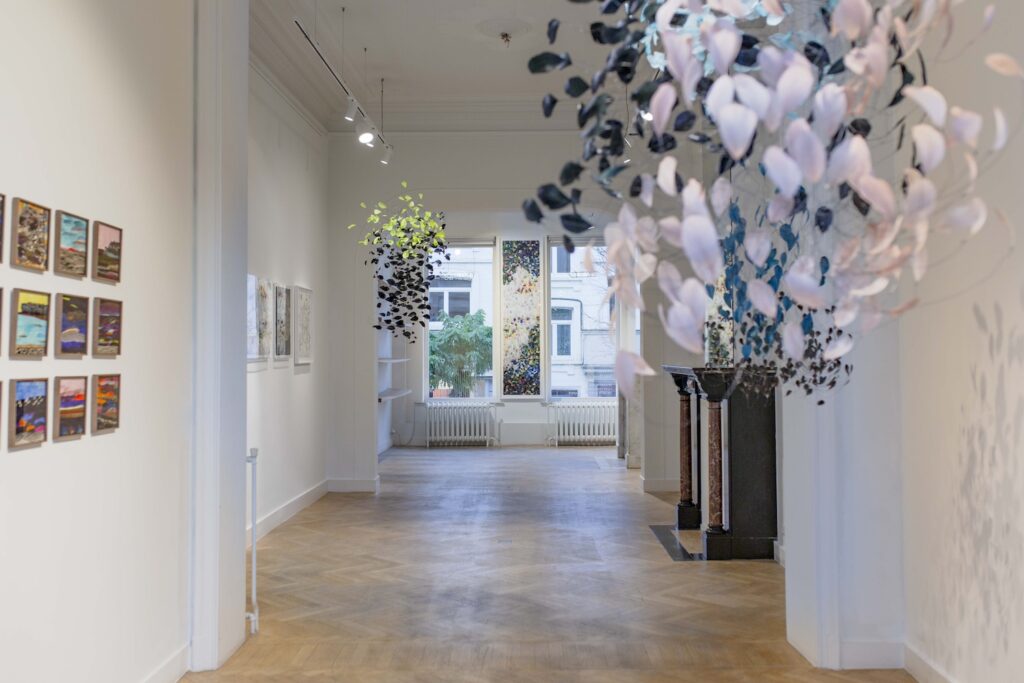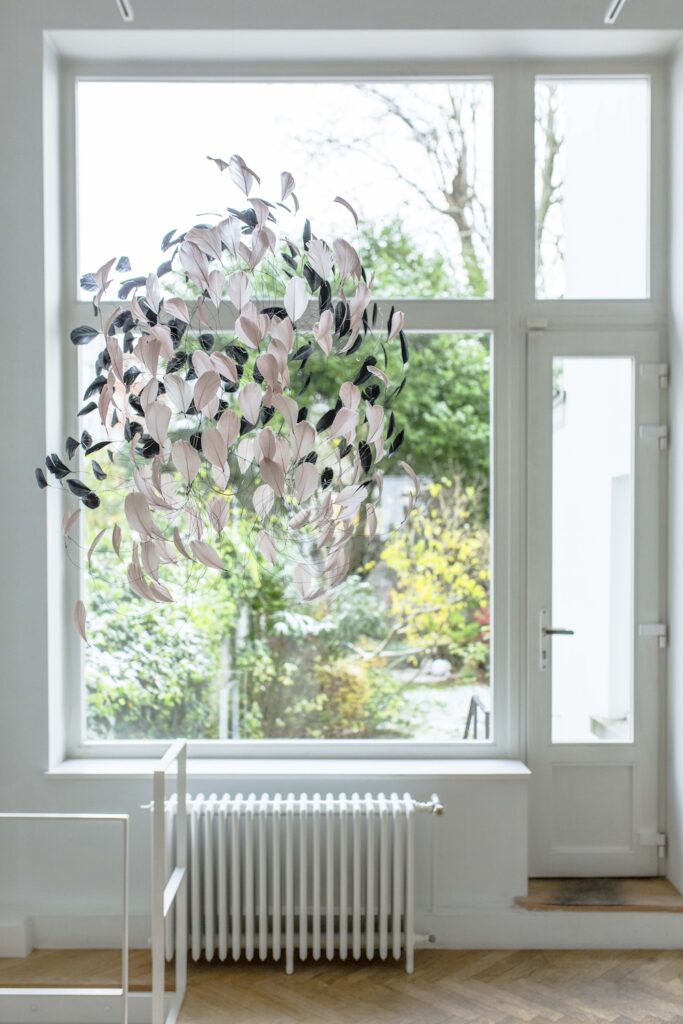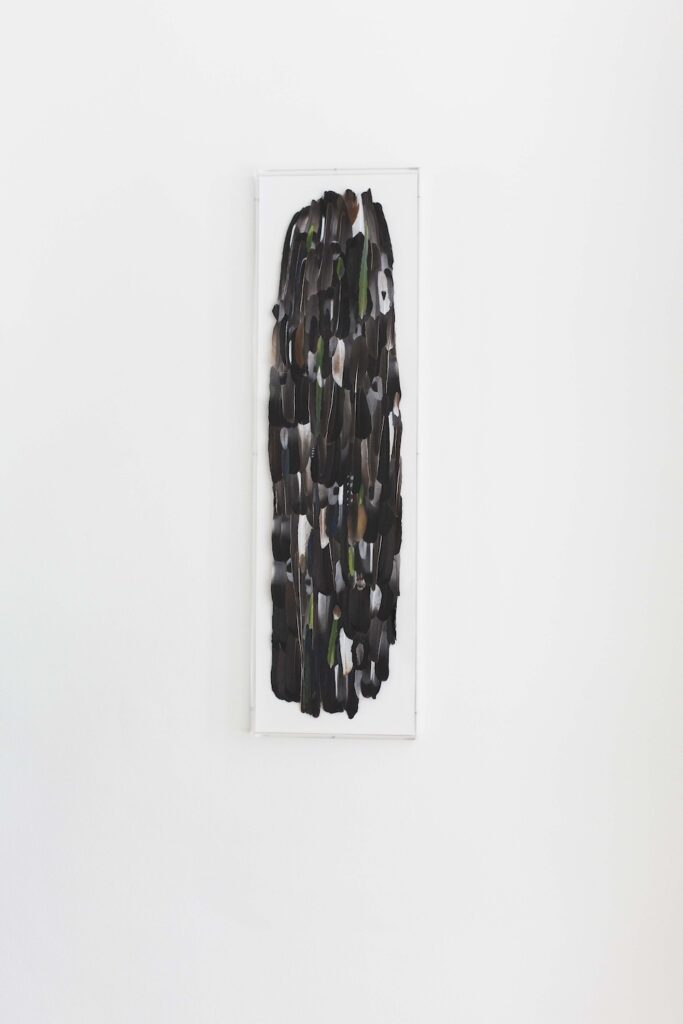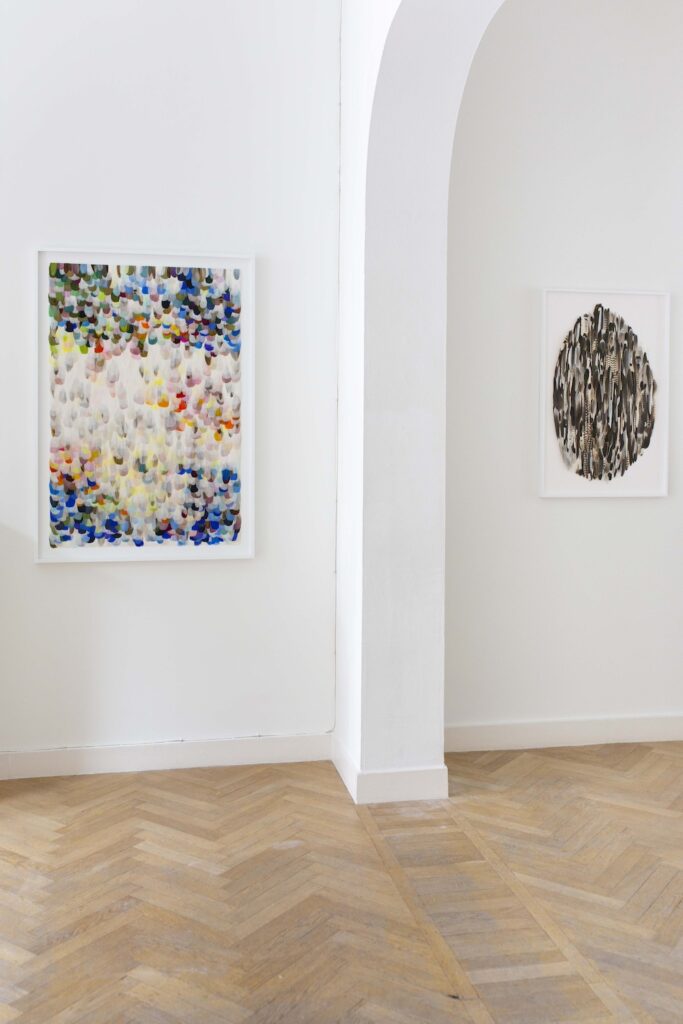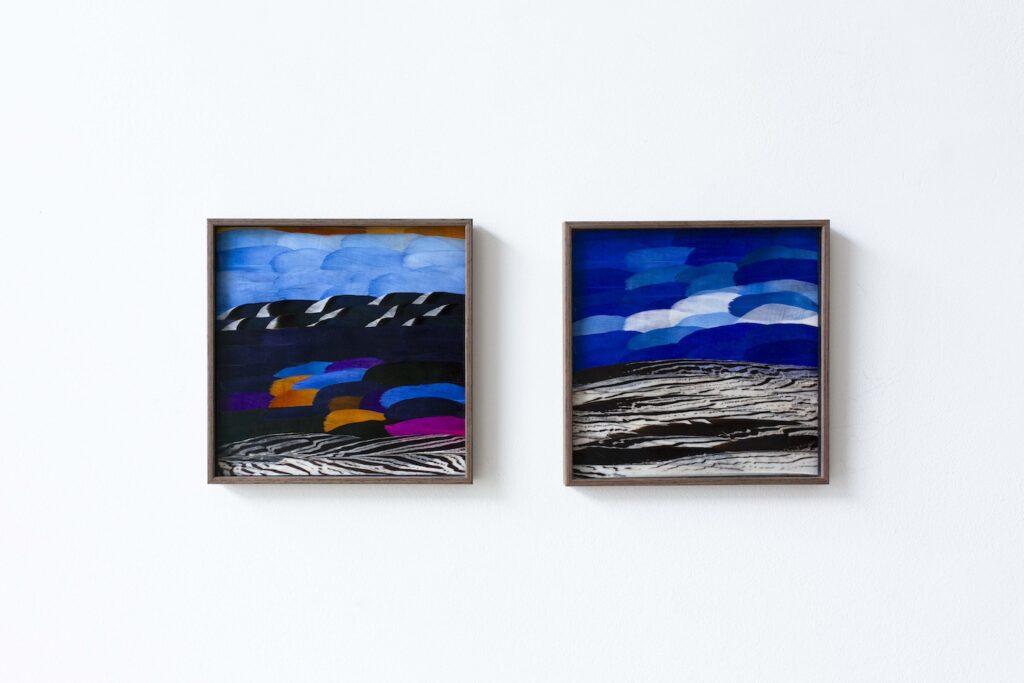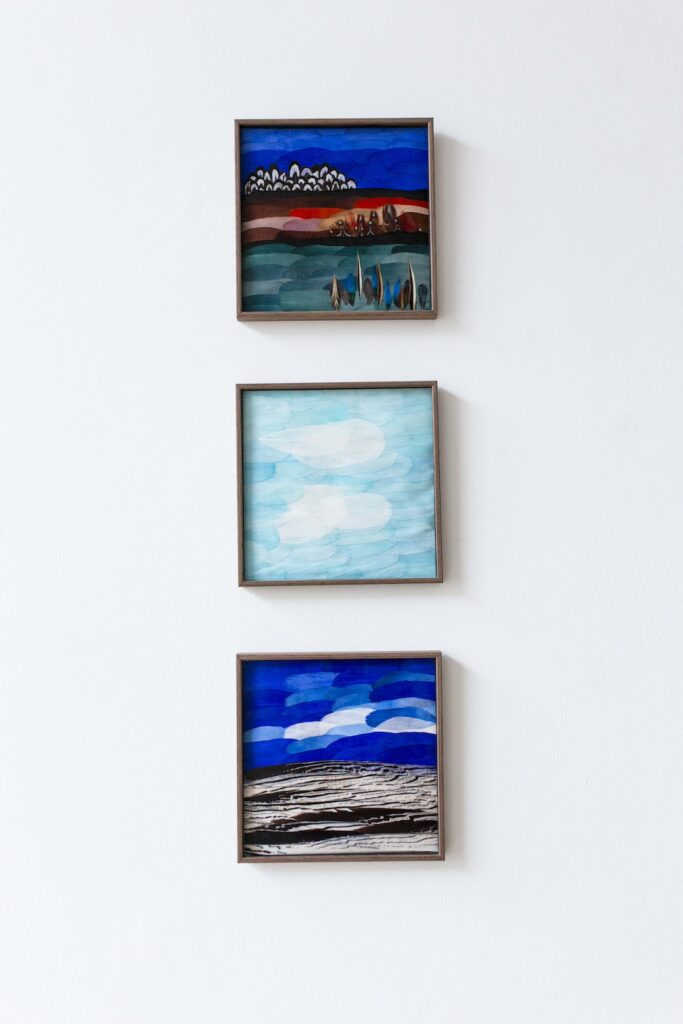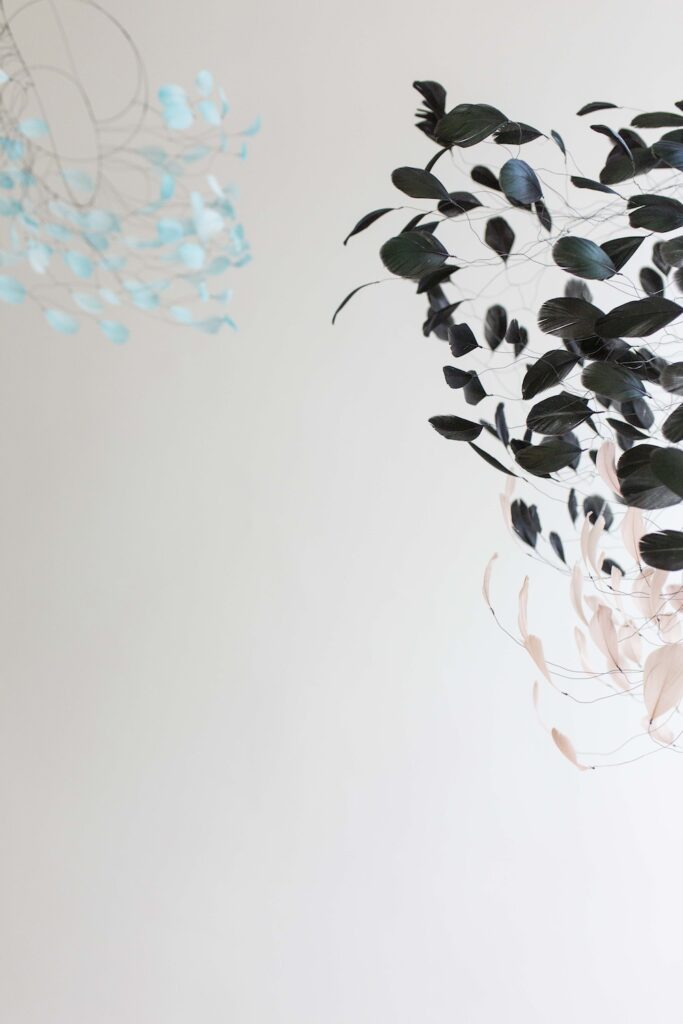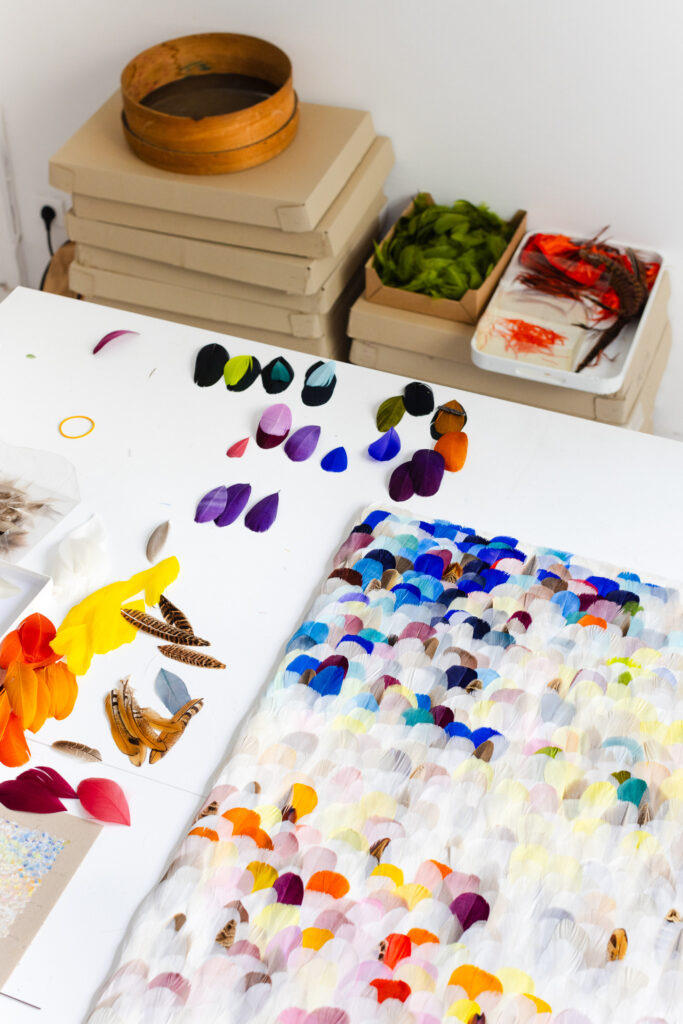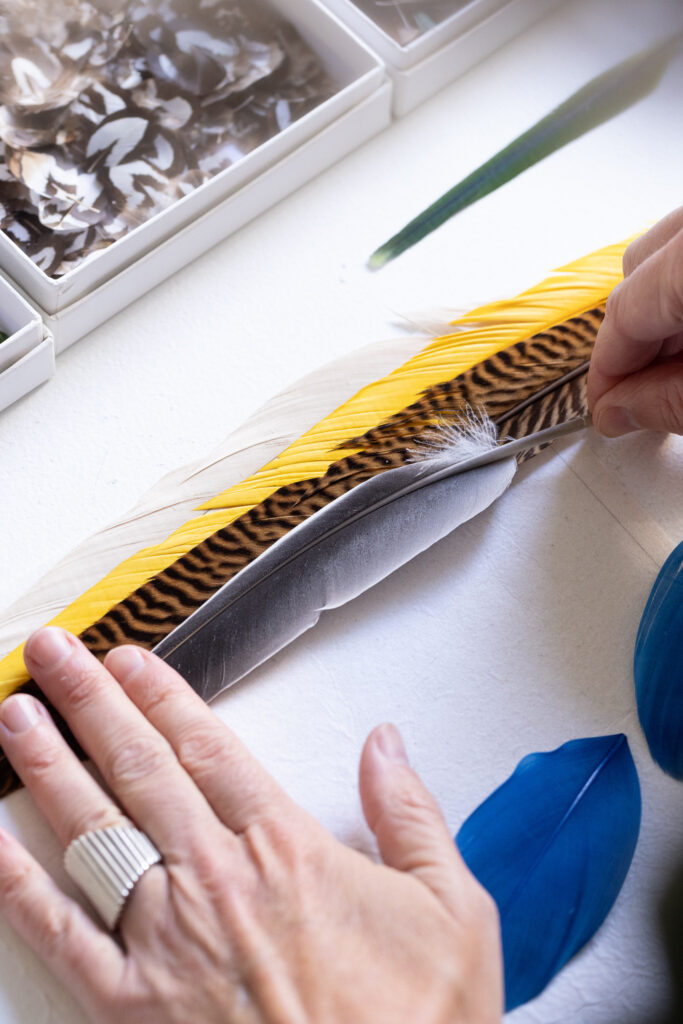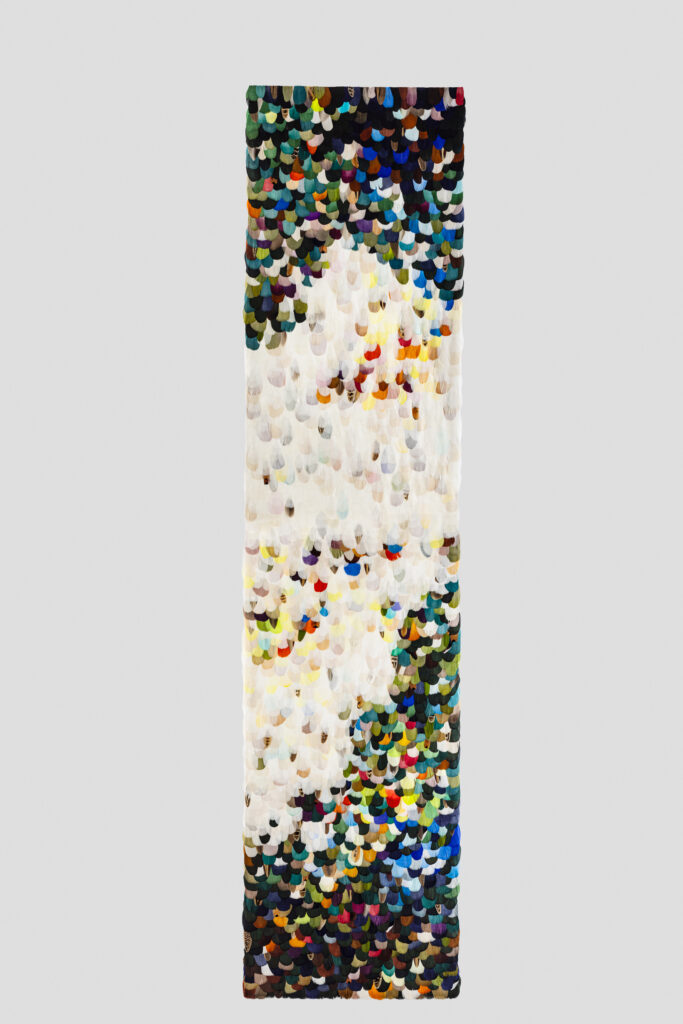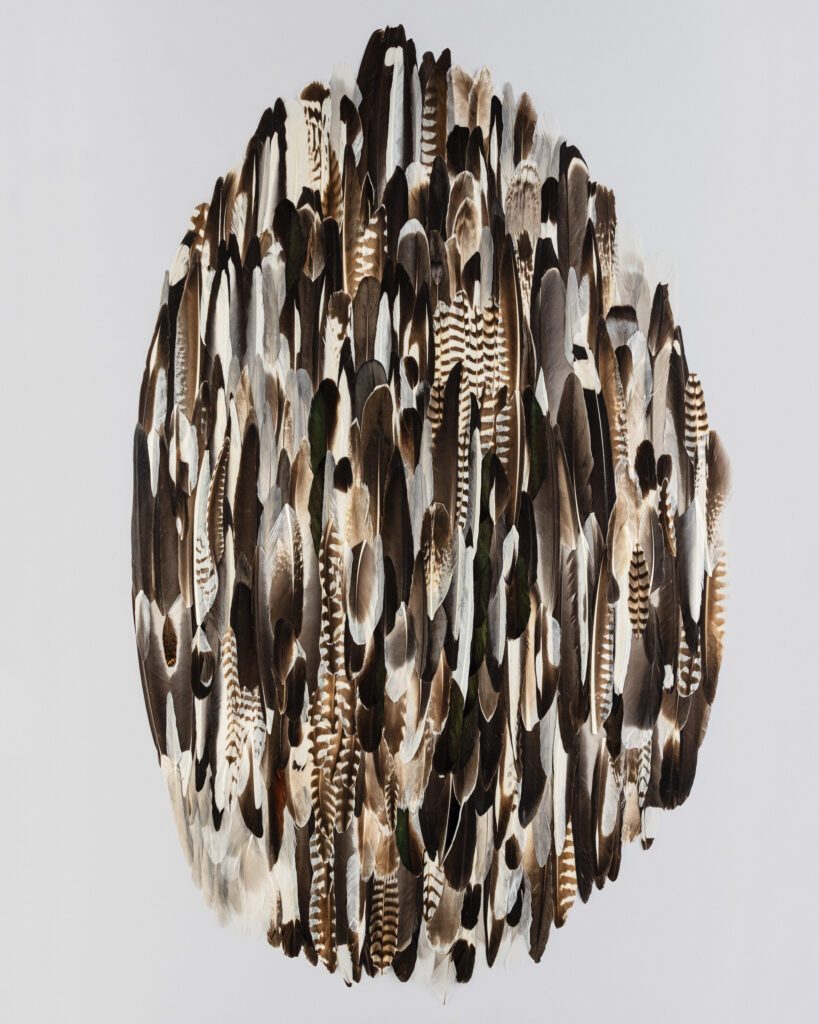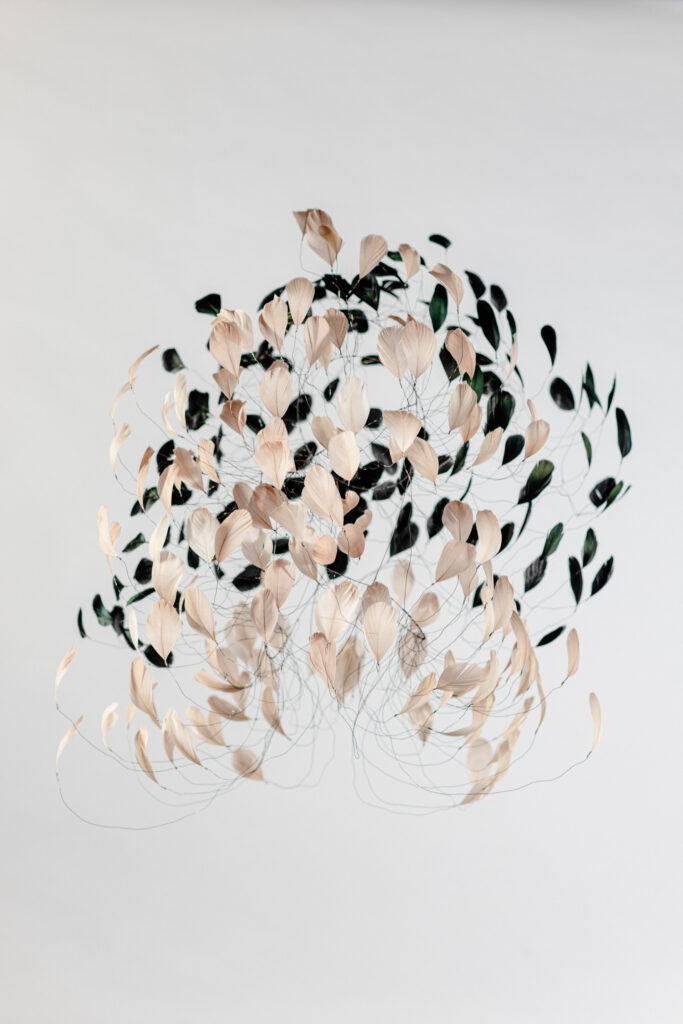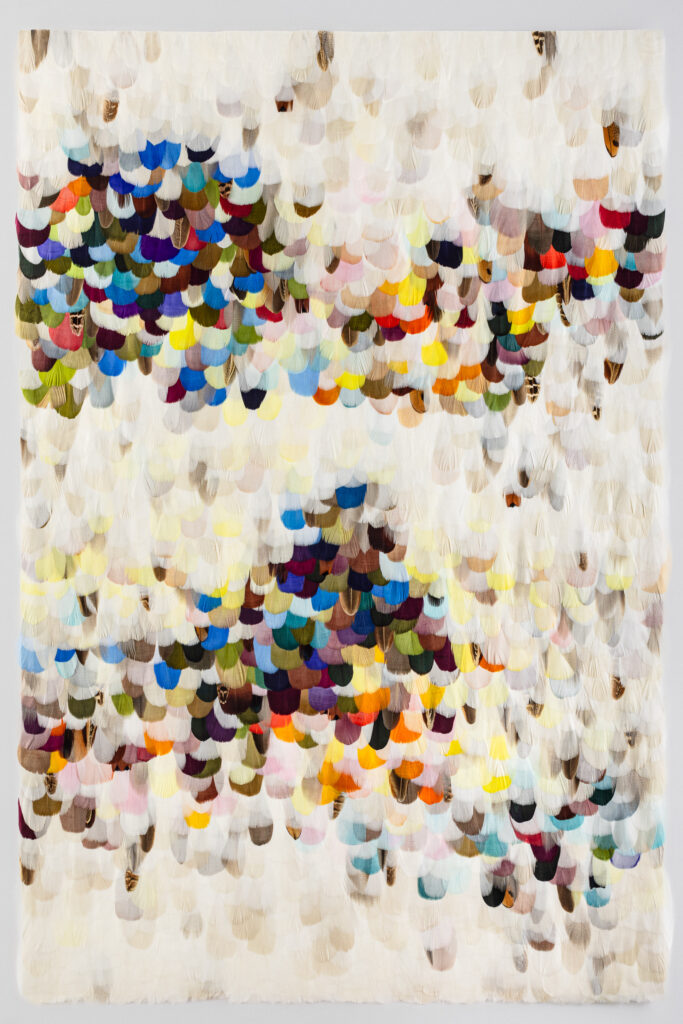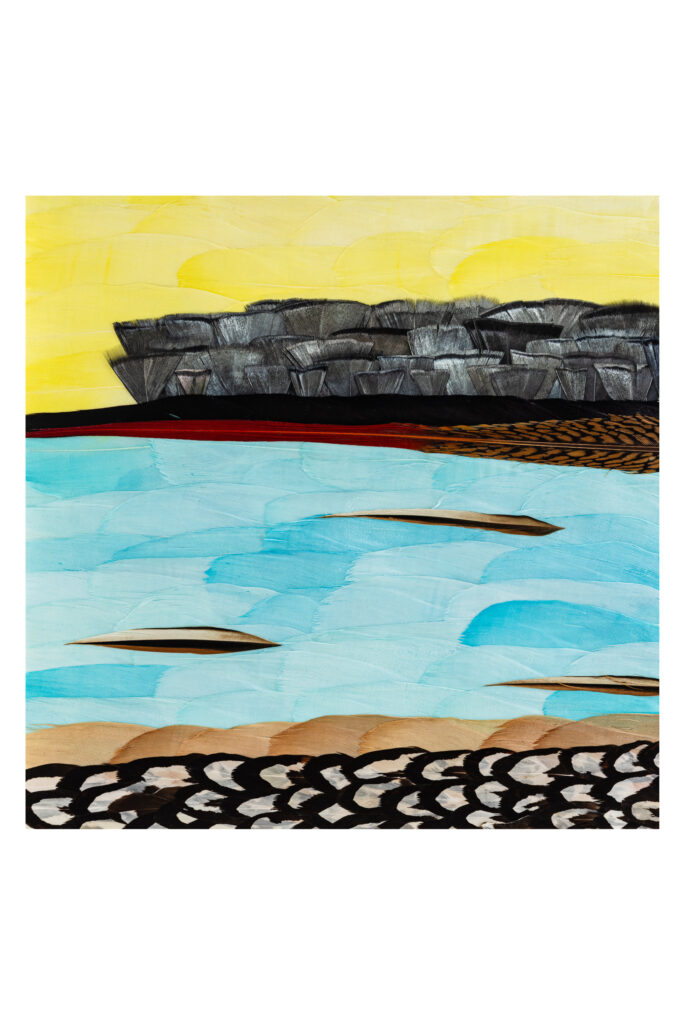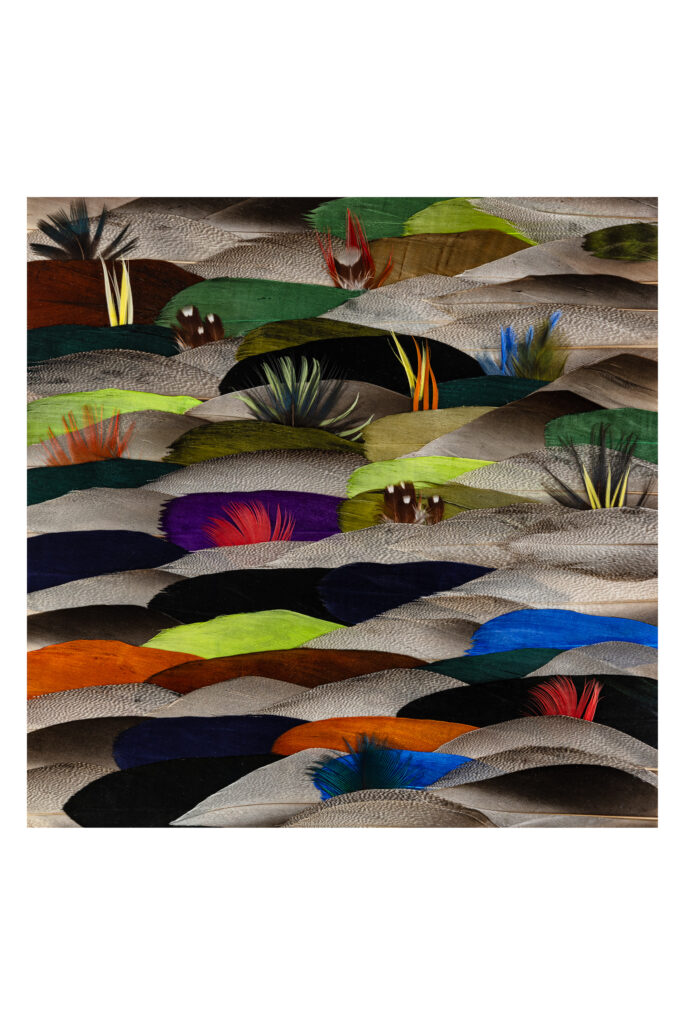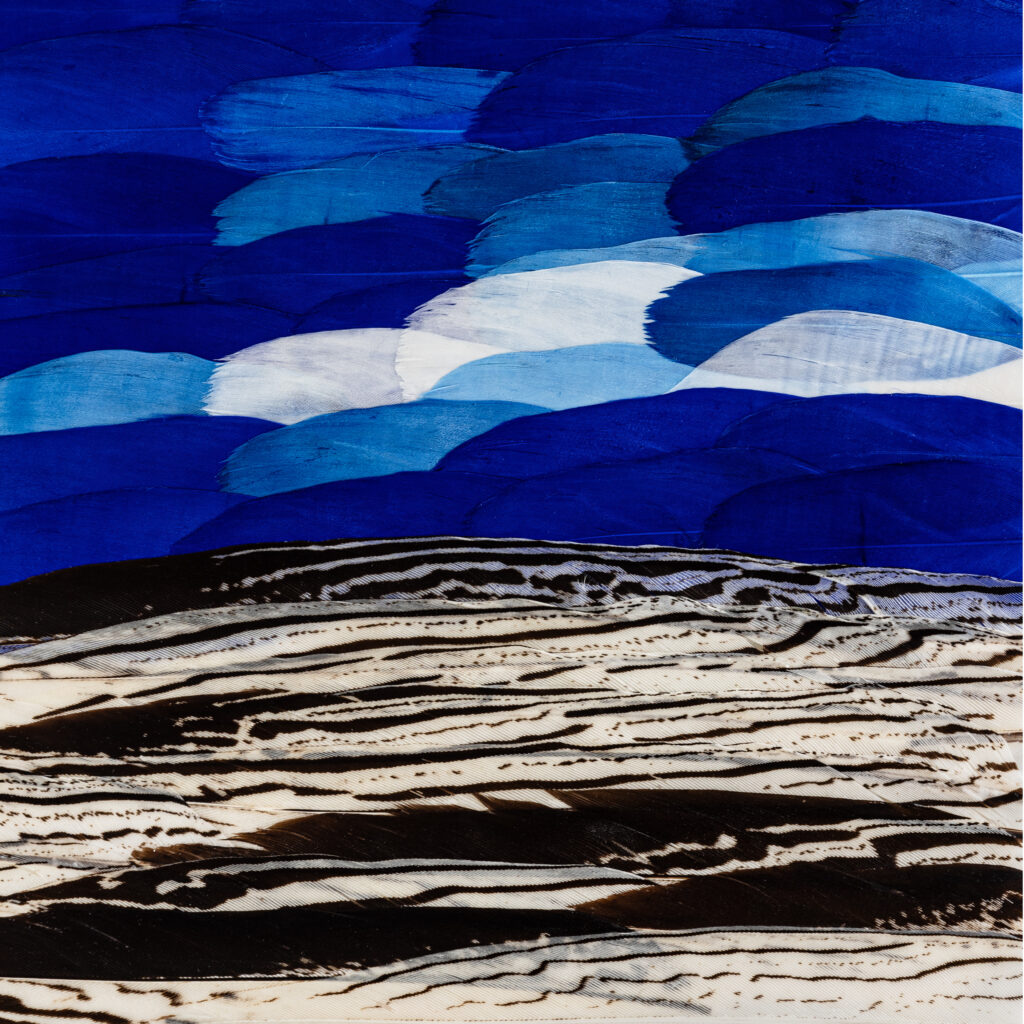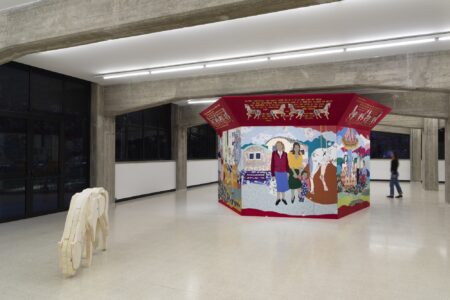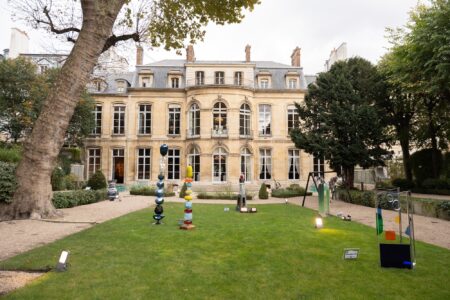Florence Coenraets: Immersions
Spazio Nobile presents Immersion, a solo exhibition by Belgian artist Florence Coenraets featuring new feather paintings and aerial compositions. The exhibition is on view through January 19, 2025.
Visual artist Florence Coenraets presents her first solo show at Spazio Nobile, an invitation to a sensory journey through new creations created for the gallery. This body of work comprises feather paintings and aerial compositions with evocative titles: “Atmosphères”, “Ciels”, “Cosmos”, “Haïkus” and “Immersions”.
The feather reveals that everything is interconnected: the earth, the cosmos, the real and the imaginary. It also runs through the history of art and humanity. Both a drawing and a writing instrument, often made from goose or even swan feathers, it is used to draw clean, precise lines of great artistic finesse. The feather has also served as an ornamental, ritual and symbolic motif in the cultures of America, Oceania and Africa. In Western art, the feather alone evokes lightness, freedom and a link with the universe, whether pagan or religious.
Florence Coenraets is part of a contemporary artistic movement that uses the feather as both an artistic and existential means of expression. She invites us to think of it as an echo of a waking dream, faced with the richness of a palette of natural or supernatural colours, like a Fra Angelico ‘a fresco’ painting, a source of lightness and creativity. The visual and tactile escape offered by this medium of creation is an offering from the heavens, the passage of a season, a migration to an elsewhere inhabited by space and the imprints that dot its territory. As Florence Coenraets puts it: “My practice begins by plunging my hands into the material. The feather immediately puts me in touch with this natural material, from the animal world, from birds. It touches me immediately and allows me to forge an intimate link with the living world, where every detail – colour, texture, lightness – becomes a source of inspiration. This intuitive, physical relationship with matter and otherness nourishes my work, while reviving memories and sensations I have experienced in the great outdoors. I define myself as a visual artist working with feathers as my preferred material. I’m also attached to the traditional techniques and skills of feather craftmanship, which I enrich through my artistic approach.”
The “Immersions” evoke for her this impregnation of the body by the environment. “The feather connects me powerfully to existence,” explains the artist. “My sensory memory, soaked in life, is awakened: the delicate freshness of the dew, the dazzle of a ray of sunlight, the soothing envelopment of the forest. These moments of pure wonder, exploration and freedom in my childhood carved a deep connection with nature, making it an inexhaustible source of inspiration. It was by drawing on my sensory memory that I approached the “Immersions”. The ones I created for my solo exhibition are linked to water, to aquatic sensations and movements.” Feathers also have the ability to sculpt space and make it sublime. “It makes space sensitive, combining matt and shine, power and lightness, density and transparency. Its texture gives depth to space and emotions. It’s the same precise, immediate gesture that I use in my “Immersions”. Each feather is a touch of colour. When superimposed, the colours blend together, whereas in the “Haikus”, each particularity of the material, such as the line, the shape, the reflection, is used in a precise way to depict a landscape”. Florence Coenraets’ “Atmosphères” mobiles, which unfold freely in space, are connected to architecture, while her “Immersions” are linked to painting. She explains how she plays with feathers in her mobiles: “The feathers are arranged to capture and modulate the light. By suspending the feathers in a sculptural composition, they take flight and become light, airy structures.
These mobiles create movement, moving with the slightest breeze and filtering light to create a subtle play of shadows cast in the surrounding space.” In her “Immersions”, the feathers are arranged in successive layers. “I enhance the natural colour palette by hand- dyeing the goose feathers to offer a wide variety of tones similar to natural gradations. Translucent feathers are layered to create new shades, giving depth and a painterly quality to the composition. I also use feathers with slight imperfections, which adds authenticity, honouring the raw, natural essence of the material. For me, every material is ‘alive’ and has a link with the context from which it comes.
It’s this ‘site-specific’ dimension that I want to develop in the “Ciels” series, which consists of works made from feathers collected in a specific area. The presence or absence of certain birds bears witness to climate change, and migratory routes are greatly affected by these transformations. I would like to work with ornithologists and link each feather to a bird, its history, its habitat…” Her “Haïkus” evoke the short, profound Japanese ‘seasonal’ poems that express the ephemeral, the impermanent. She speaks of them as capturing memories, places and feelings that link a space, a landscape and real or fictional emotions. “These are narrative landscapes that attempt to capture the essence of a moment. They establish a relationship with memory and the passing of time. Each “Haiku” is an imaginary landscape that brings together memories of moments lived, heard, felt or dreamt.”
Florence Coenraets explains: “Most of the feathers I use come from farmyard birds intended for consumption, such as roosters, hens, guinea fowl, pheasants, ducks and geese. It’s a material from the food industry that I’m revaluing in my artistic practice. I buy from specialist breeders and sellers who respect the Washington Convention and the protection of birds. I also receive feathers from hunters, mainly ducks and pheasants.” “I have chosen an experiential setting for Spazio Nobile,” concludes Florence Coenraets. “The atmosphere I want to create is one of gentleness and travel: being transported to another place, soaking up new sensations with the “Immersions” and “Cosmos”, observing landscapes with the “Haïkus”, and being touched by the atmosphere created by the slow movements of the “Atmosphères” mobiles and their play of light and shadow.”
